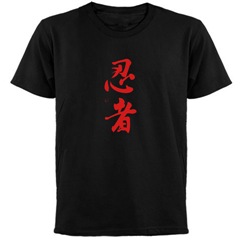Sanskrit Om Symbol Organic T-Shirt

Wearing an organic t-shirt with the sacred sanskrit OM is like doing meditation in action.
OM is a primal sound, a sacred syllable containing the whole universe of all times: past, present and future. It's kind of powerful to wear a mystical t-shirt with an artistic om symbol next to your heart.
The fabric of this artistic t-shirt with the om sign is first-quality organic cotton. And as usual, your satisfaction is guaranteed.
Our om symbol t-shirts, apparel, prints and posters are originally designed for this om sign collection.
Browse our om symbol collection to get great gifts for her or him
Here's the artist's Japanese calligraphy and painting web site showcasing her artwork.
Add this article to your del.icio.us bookmarks
Technorati Tags: sanskrit om, om symbol, t-shirts, kanji symbols, t-shirt+art, organic t-shirts, mystical t-shirts
© Núria Roig







